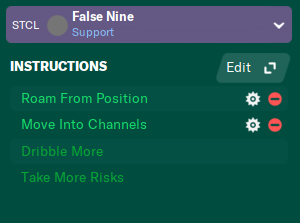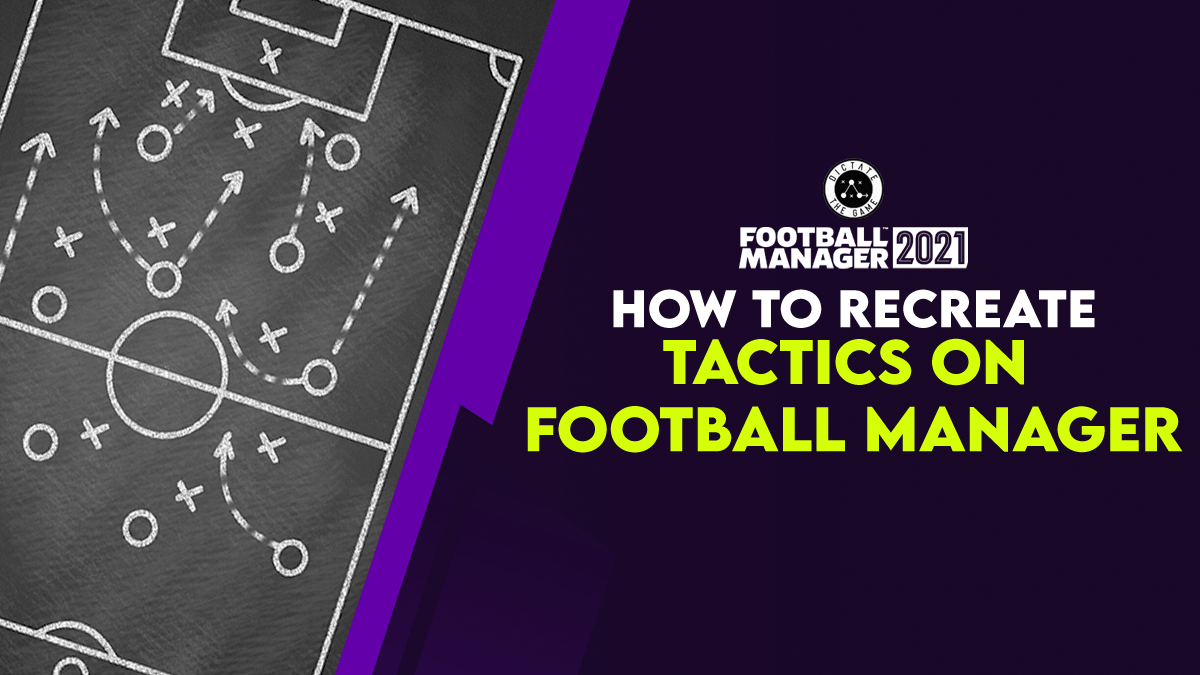
How to Recreate Tactics on Football Manager
It’s not a stretch to say that every FM player is, to some degree, a football fan. But even as we all share the love of the beautiful game, everyone has their favourite style. Be it a possession heavy style or a deadly countering team, we all want our side playing a certain way. When the time comes to take inspiration from our favourite real-life managers, however, the job can get tricky. Fear not, for help is on the way, with this guide on how to recreate tactics on Football Manager.
A small warning before we begin
Whilst I think that most football tactics can be recreated with a certain level of veracity on FM, it is impossible to do a perfect replication. Real life managers and coaches can give specific instructions to their players to a degree which neither FM nor any football simulation can realistically access.
In much the same way, some tactics, particularly those that make use of uncommon ploys or come from a very different era, can’t be very accurately recreated. The FM tactics generator is a very capable toolbox, but not an unlimited one.
Recreation 101
Recreating a real life tactic in FM is about recognizing the most important parts of what a team tries to do on the pitch and figuring out how to translate that into the game’s language. Sometimes it can be fairly straightforward, sometimes it can be nearly impossible; most of the time it only takes dedication and a certain fluency in Football Manager’s tactical lingo. That is, what each role, instruction and option does.
For the Roles part, I can wholeheartedly recommend this three-part guide. The first two instalments are a bit outdated as they were written during the FM18 cycle. However, it’s a great starting point if you’re not entirely sure what each role is meant to do.
The TI and PI part is a bit trickier as no one has done (to my knowledge) a fully comprehensive guide on that. However, I also think it’s a fairly shorter road so a bit of trial and error will get you there.
As for the recreating part itself, my process is simple, just three steps: observation, analysis and adaptation. Let’s walk through each of them with some examples. I asked a group of friends for a team to analyse as an example for this guide and they came up with an interesting one, Alexander Medina’s Talleres de Córdoba from the Argentine league. It’s a good one since despite them playing in my home league, I haven’t paid much attention to them. That means I’ll go into the footage with a clear mind.
Observation
Finding the footage
The first bit is fairly simple; you can’t recreate a team you don’t know, so you have to watch them in action. Depending on which team you want to recreate, that can either be a menial task or a nearly impossible one.
My go-to source is this website which archives historic football matches. It doesn’t have every single match, nor does it cover every team of every era, but unless you’re looking for something very specific, it’ll help. Some leagues are kind enough to upload full matches on their channels, but most don’t. Other sources can be the usual video streaming services and fans forums or websites, particularly if you’re looking into a side from a very popular club.
Whilst you don’t need the full ninety minutes of a match, I’d stay away from “best goals” highlights; they almost exclusively focus on a single aspect of a team’s play. You need the whole picture; a goal might have been amazing, but how that play started is equally important to understand how that team works. Long match compacts, on the other hand, can be quite useful, particularly if full match footage is scarce.
No such thing as too much
As to how much you need to watch, the boring answer is “as much as you can”. Realistically speaking, I’d consider 4 to 5 five matches a solid foundation, particularly if context and rivals have been varied. If you’ve only watched a side against weaker opposition, you’ve only seen one side of them. If you’ve only watched a side in high stakes or elimination matches, you’ve only seen one side of them. You need to remember this is about getting the fullest picture possible.
Once you have everything ready, it’s time to watch some football. An important part, particularly if you’re analyzing a side you’re not entirely familiar with, is learning which number and what general appearance a player has. Try taking notes very early on so you can check any time you’re in doubt; you won’t need them for long, but they’ll make those early moments much less confusing. If the footage you found lists the starting 11 for each team before the match, that’s a golden opportunity. It seems very common place but I’ve encountered some that don’t. However, don’t take the formation as gospel since it’s often done carelessly if not completely oblivious to reality.
What to look for
What should you look for? Try focusing on the movement of each player with and without the ball. That, of course, means sometimes you’ll be following the left-back whilst the attacking midfielder does something incredible, but that’s the whole point; go back and watch it again.
Once you have a better understanding of what each player is doing, you can start focusing on the match as a whole. Try predicting what might happen next. Which player is gonna pop-up at any given place and time? Who’s gonna get more of the ball? As you become more familiar with the team, you’ll get those increasingly right.
Analysis
The objective of the analysis is to recognize patterns that we can take into consideration later on, when creating the tactic. The idea is to take all of the points you’ve picked up during observation and assemble them into a cohesive idea.
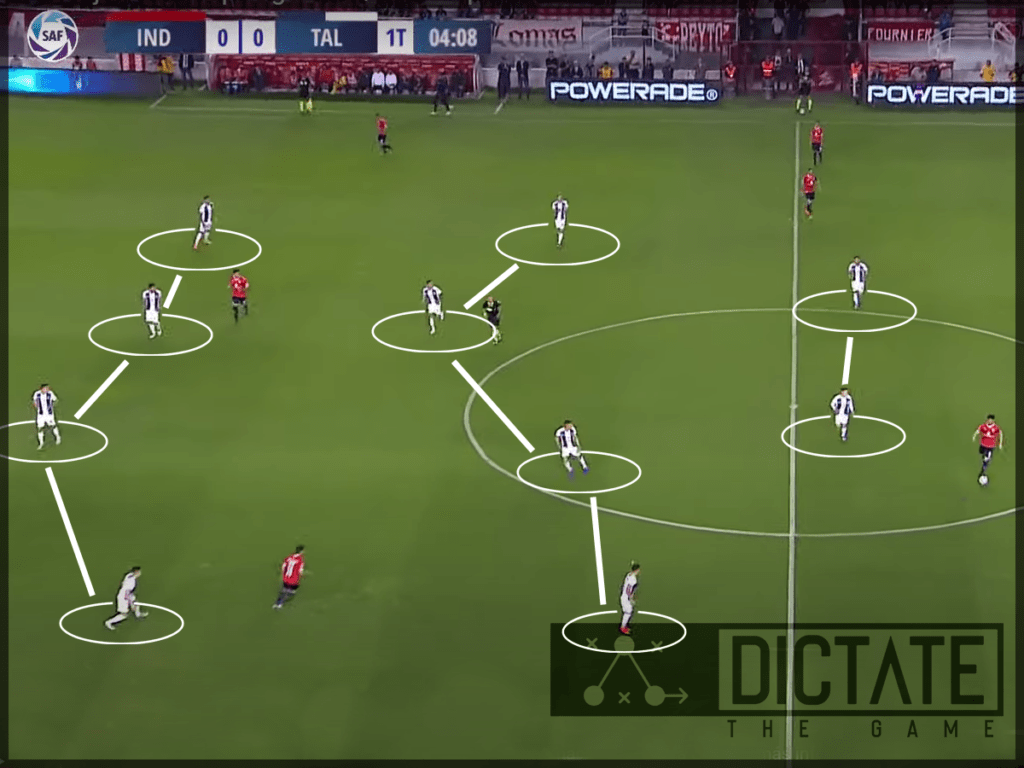
The first match I watched from Talleres was a 3 – 2 defeat vs. Independiente. It wasn’t their best performance by a long shot, but it did give me the opportunity to see them do a lot of defending. The first thing I noticed is one of the problems I told you about; most graphics said they were playing either a 4-2-3-1 or a 4-3-3; the team, however, was standing most of the time in a by-the-rules 4-4-2.
Four phases of play
I try to see how a team performs in each phase of the game. That is when they are set on defensive positions, when they attacking in control of the ball, and when they’re transitioning, either from attack to defence or the other way around.
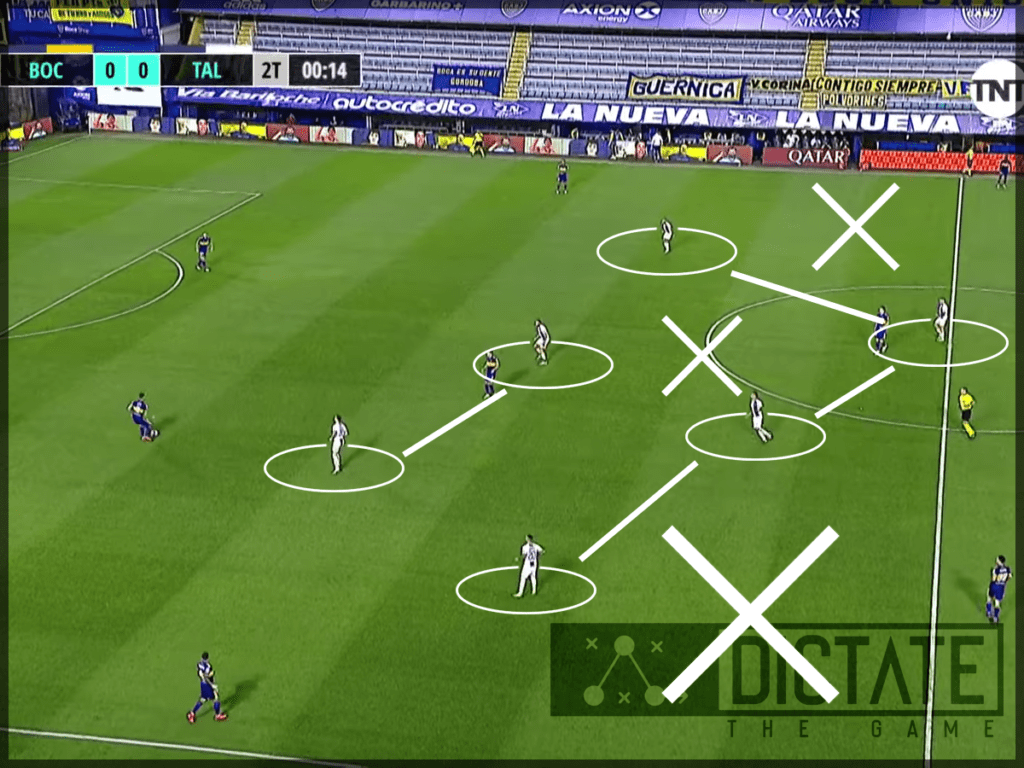
On defence, they’d look to form a low, compact block, with the team collapsing on the flanks whenever the opposition looked to exploit the wide spaces. From a pressing stand by, it’s not a modern hard press but a more patient approach. They’d occupy positions up the pitch, but would not close in on the ball carrier like maniacs. Rather, they’d close down the passing lanes and look for an opposition long ball that big centrebacks like Juan Cruz Komar and Rafael Pérez can win in the air.
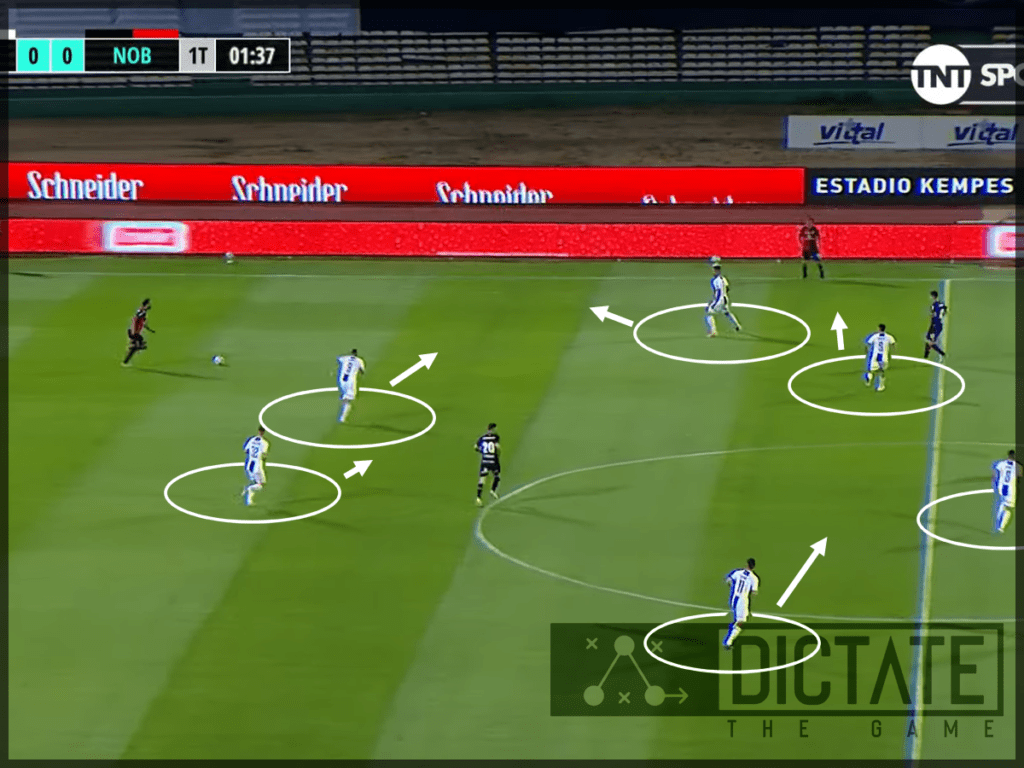
Later I watched their impressive win vs. Boca Juniors at La Bombonera. There, they used such pressing traps to frustrate the opposition and look to hurt them on the counter. Key to all of this is attacker Tomás Pochettino, who roams from position, looking for space to receive the ball and move forwards. It’s important to understand who the most important figures as these are the players we’ll be looking to mimic more closely on FM.
Zones of attack
When analyzing the way a team attacks it’s important to see where they’re taking the ball and what they’re doing with it. In Talleres’ case, they’d look to build from the back, particularly through centre-back and captain Komar. However, when pressed they often lacked the technical resources to play around the press, particularly against Independiente. They would have to then look for a long ball from the back.

They’d look to attack mainly through the wide areas, with fullbacks Tenaglia and Díaz often combining and overlapping with the wide midfielders or Pochettino himself. Most crosses would come early as an effort to find someone in space either at the edge of the area or breaking in from the far side.
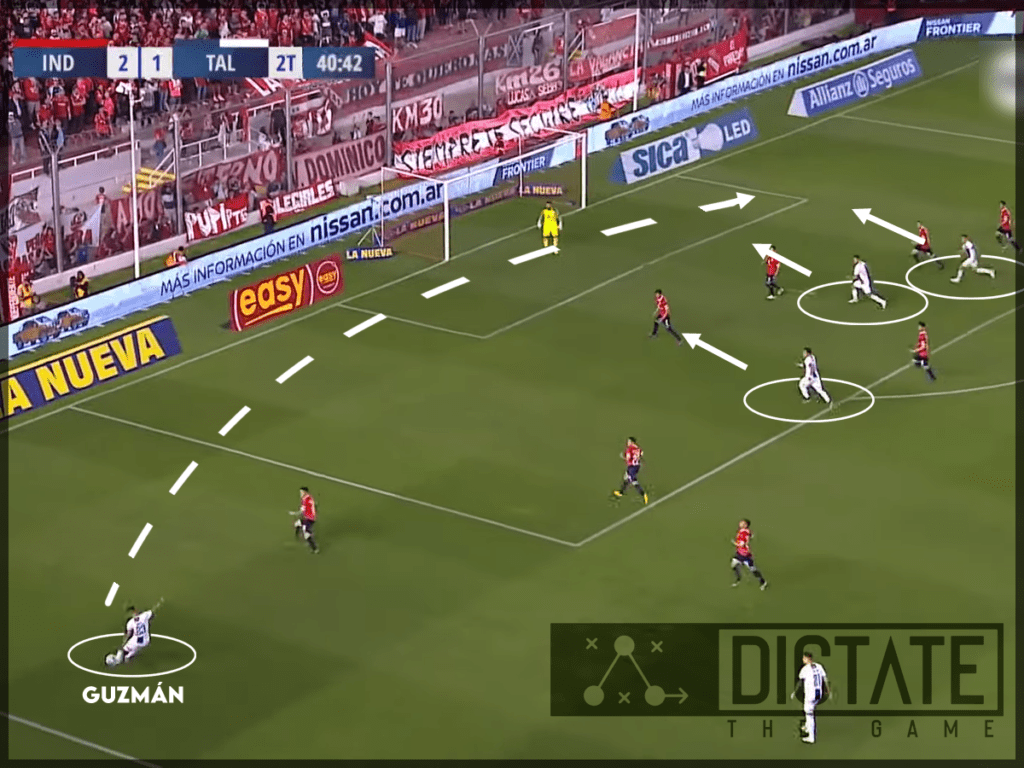
With a clearer idea of how this team plays, we proceed to the Football Manager tactics screen to plot our tactical adaptation.
Adaptation
As with any tactic in FM, it’s important to have the players to pull that style off. If you’re doing this recreation work for your own save, this might be the moment of compromise or heartbreak. Since I’m doing this for the guide, I’ll pick a team that I’m sure can do it… Talleres themselves.
When approaching the creation of a new adapted tactic, I try to use the “Create your own style”. The idea is to begin with a clean sheet and not have anything pre-selected. The first thing is to choose the mentality and formation. Since it’s mostly a counter-attacking I’m gonna go for a Cautious mentality.
Formation & Roles
For the formation, I’m gonna choose a 4-4-2 as this is how they arranged themselves during their defensive phase. Always remember that the formation in FM is most related to the defensive shape of a team; if during your analysis you find players dropping off or cutting inside, etc, remember that’s something to work around with the roles.
Speaking of which, time to do it. For the back line and the keeper I’ll go for a fairly standard back four and a keeper of two centrebacks on defend duty and two fullbacks. I’ll set the left fullback on attack to have him push higher as we saw during the analysis phase.
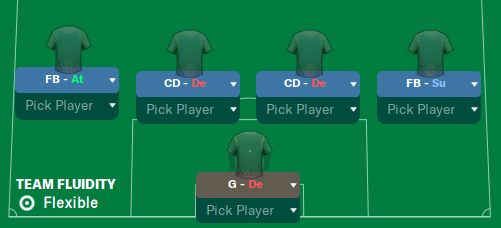
For the midfield duo, I’ll keep the CM-S/CM-D duo. Both players were mostly there to offer support during transitions, and were not the focal point of the team. Don’t be afraid of using less specific roles, particularly if you have a player with the right attributes to carry out the task you intend them to. Not every player has to be a specialist. On the wings, a Wide Midfielder on Support on the left and a Winger on Attack on the right offer a good balance with the wide defenders.
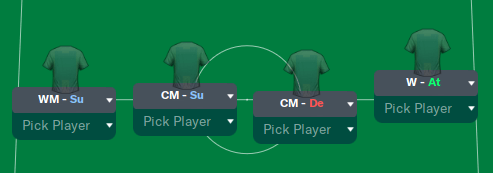
Finally, up top is where the biggest challenge comes. Both strikers are often very mobile, but Pochettino in particular has the habit of popping up nearly everywhere to make things happen. Taking a look at some heat maps for the matches we’ve looked at, it seems he’s most often moving around the left-hand side.
That’s where we’ll put in in the front two. Using him as False 9, I’ll add the instruction to “Move into channels” and “Roam from position” to best emulate Pochettino’s mobility and freedom. Next to him, I’ll select an Advanced Forward to spearhead the attack.
Team & Player Instructions
With the roles selected, it’s time to focus on the Team and Player Instructions. We’re looking for the team to drop slightly off the press but close down energetically and to launch fast-paced counters. When attacking, they should try to build up from the back and focus on the flanks, crossing early to exploit their attackers’ mobility and the space created on the counter.
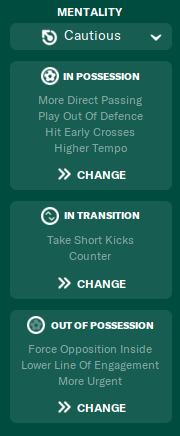
On Possession, I set the team up to play higher paced, more direct football, whilst also looking to build from the back. This combo is unusual, so we should get some match experience to see how they work together. I also set them to Hit early crosses to attack gaps quicker.
In Transition, I only set the Counter and short goalkeeper distribution instructions on. This side is certainly not a counter-pressing side and distribution often depends on the available space.
When Out of Possession, I’ll ask the players to drop slightly the line of engagement. I’ll also set them to defend wider and to press more intensely. This looks to mimic Talleres’ hard wide press and blocking off the passing lanes. I’ll also ask all wide players to press more intensely
Concluding
Recreating a football tactic on FM is not always easy. Once this process has concluded, it’s time to test the tactic and see how the match engine works with the instructions and roles we’ve selected. If things don’t work as intended, we’ll need to make adjustments on this first take, and then test again. However, with sufficient know-how, real-life footage to analyze and a bit of luck, you can recreate your favourite team’s tactics on Football Manager.
Enjoyed this? Here are other articles for you:
Using the Similar Player Filter: Buying Like for Like in FM21
Five of the most satisfying moments in Football Manager
The Title Defense: 4 Principles
From Kingston to Kirkcudbright | PART ONE | And So It Begins…


